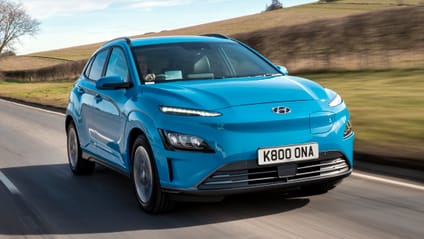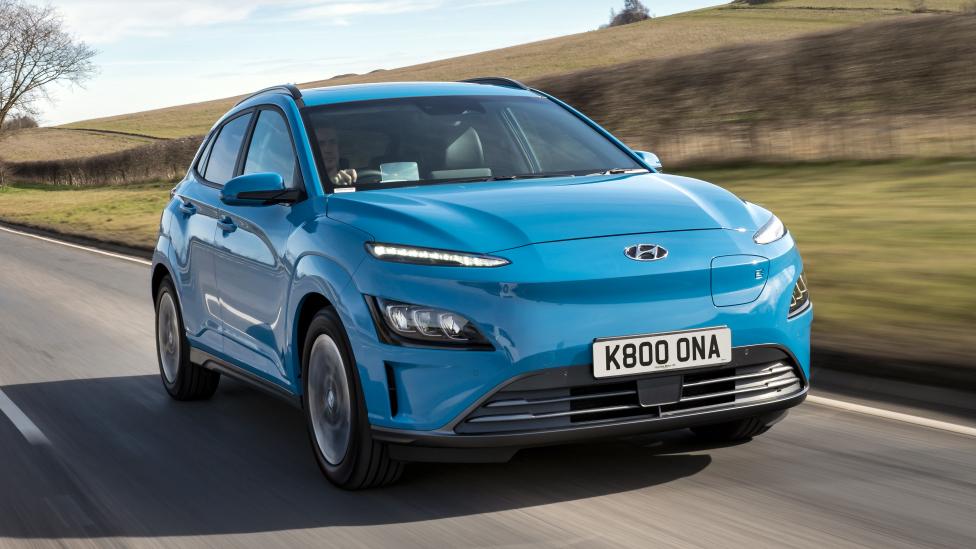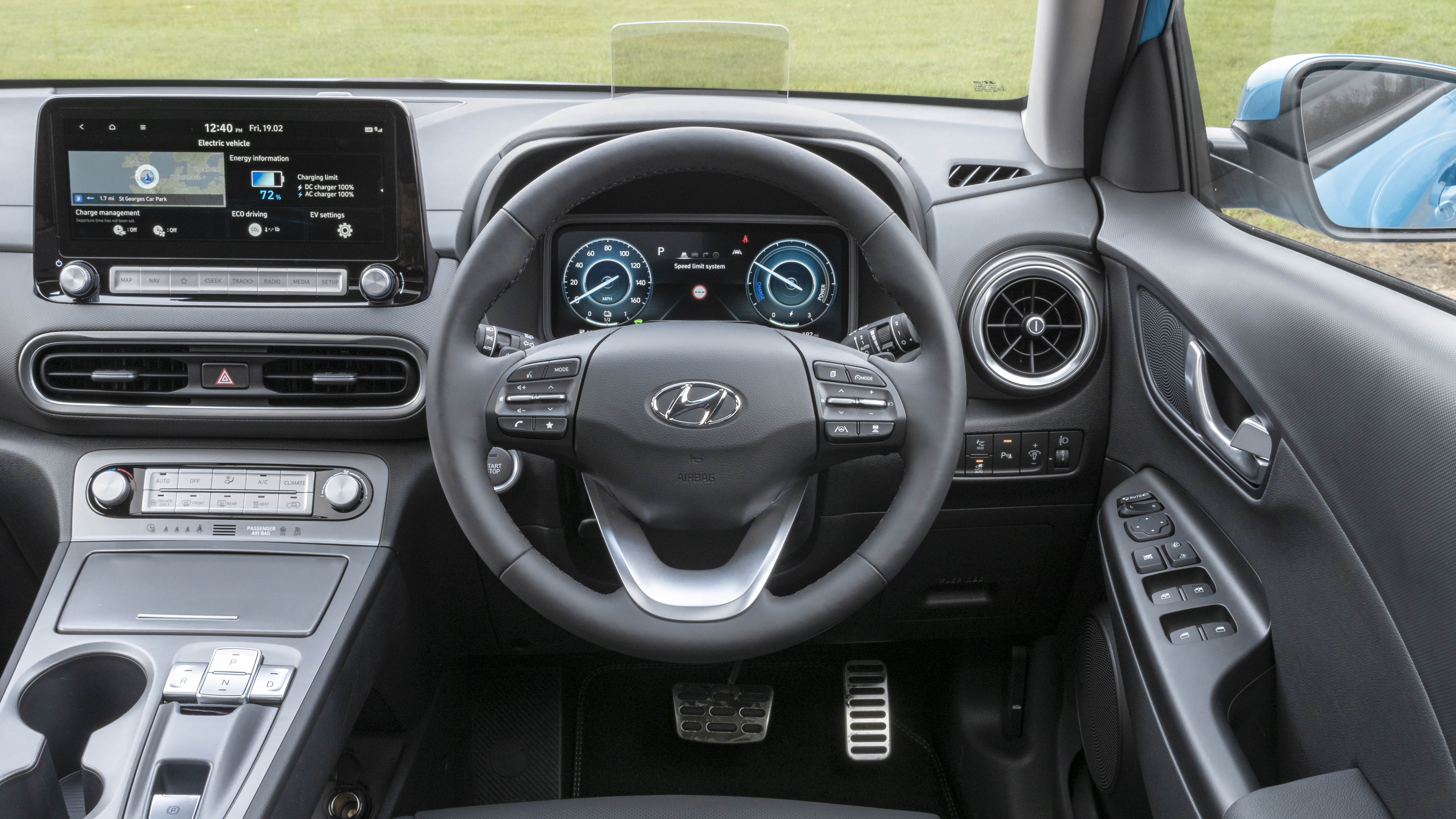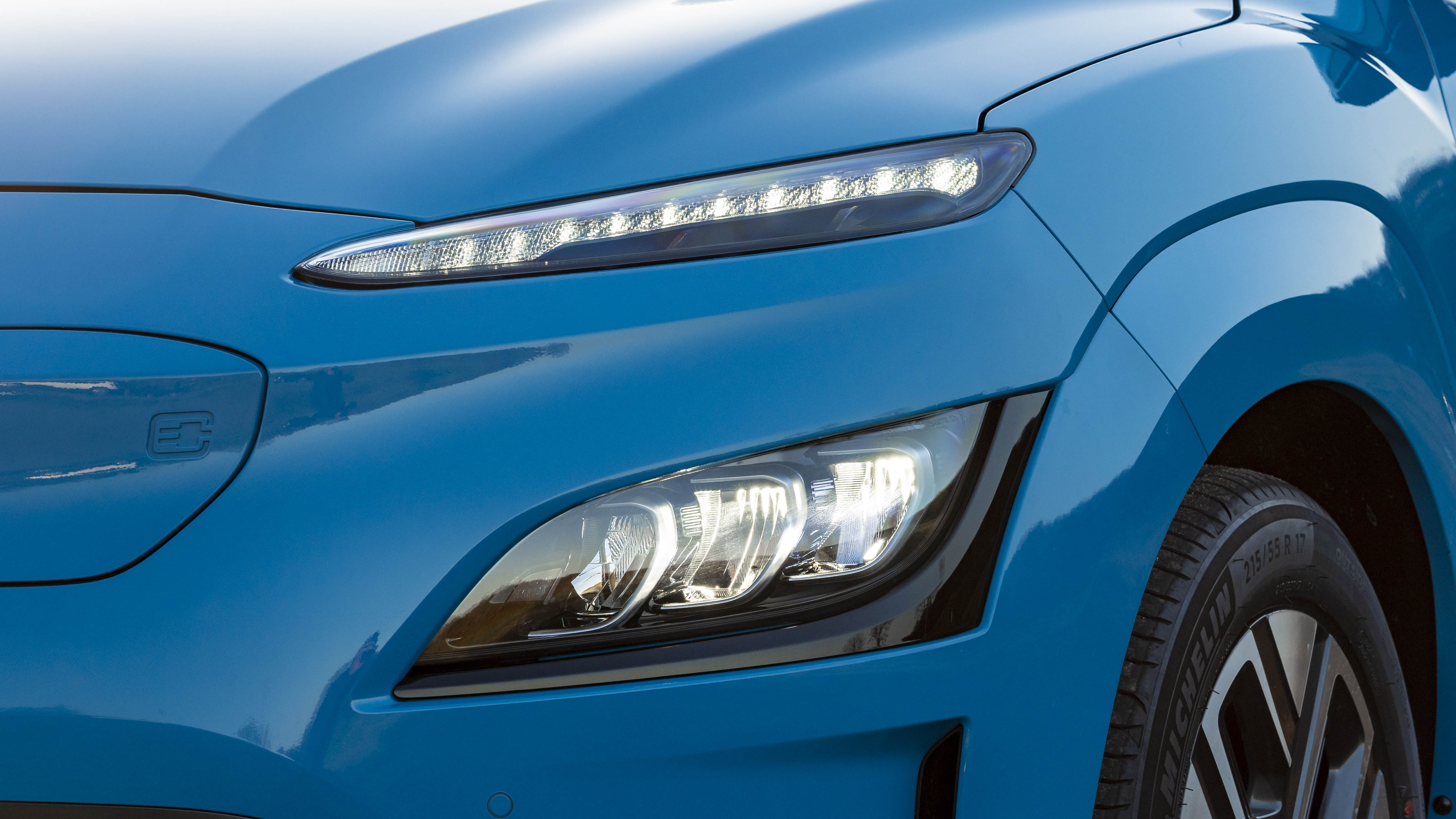
Good stuff
Excellent, efficient powertrain. 64kWh version provides big range
Bad stuff
Should be more spacious. Material quality could be better
Overview
What is it?
The EV landscape was different in 2018, when the Hyundai Kona Electric first went on sale. Right-hand drive Tesla Model 3s were still a long way off, so the only EVs on offer with more than 200 or so miles of range were the Tesla Model S, Model X, Jaguar I-Pace and Audi e-tron at £70,000 (or more) a pop.
Then along came the Koreans with the Kia e-Niro and this, the Kona Electric. Two small, front-wheel drive crossover SUVs – obviously – that claimed 300 miles of range in their bigger-batteried forms, for not much more than £30,000.
That was years ago, what about now?
That was all but unbeatable back then, and even now that there’s a bit more choice (and more to come – the VW ID.3 will soon get a 77kWh battery with up to 336 miles of range, for example) and prices have gone up slightly, you’ll struggle to go further on a charge for less money.
The Kona Electric, which has recently been gently facelifted, comes in two flavours. You can have one with either a 39.2kWh battery and a 134bhp e-motor, giving a claimed 189 miles of range, or one with a 64kWh battery and a 201bhp e-motor for a whopping 300 miles of WLTP range.
Which one should I go for?
You’ll pay around £30,000 for the base-spec 39kWh unit, but Hyundai has also reduced prices for the entry-level 64kWh to ensure that it’s just about eligible for the stingier £2,500 government grant on cars costing under £35,000. PCP/leasing costs are very reasonable too.
Looks quite a bit different to the regular Kona, which is available with straight petrol (note: not diesel) or hybrid power. There’s no front grille, because it doesn’t need one, and there are reprofiled front- and rear-bumpers, new side-skirts and special alloy wheels that make it more aerodynamic than the standard car. The charge port is up front, and the surfaces are much cleaner after its recent facelift. Strong work, Hyundai.
How long does charging take?
For the full-fat 64kWh version, a 100 per cent charge on a 7kW home wallbox takes just under ten hours, while a 10 to 80 per cent charge on a 50kW public charger should take about 64 minutes. The 39kWh Kona can charge in six hours from a wallbox and the same 10 to 80 per cent charge on a 50kW unit takes 48 minutes. Smaller battery = quicker charging times, natch.
Want to know what the best electric cars are? Click here for the top 20
Our choice from the range

What's the verdict?
The Kona Electric was a bit of a game-changer when it was launched. Now, a couple of years down the line and a facelift in the bag, there’s more competition and it’s possibly not quite as good value. But it’s still top of the class if you want a touch of style with a mightily efficient electric powertrain.
It’s one of the best all-round, reasonably priced EVs you can buy today. If range is your key concern when it comes to all-electric motoring and you can’t stretch to a Tesla, Jaguar I-Pace or similar, the 64kWh Kona has to be on your shortlist. In fact, it could easily be your only car, and the new look means it’s much easier to love.
The Rivals
Trending this week
- Car Review
BMW iX3









